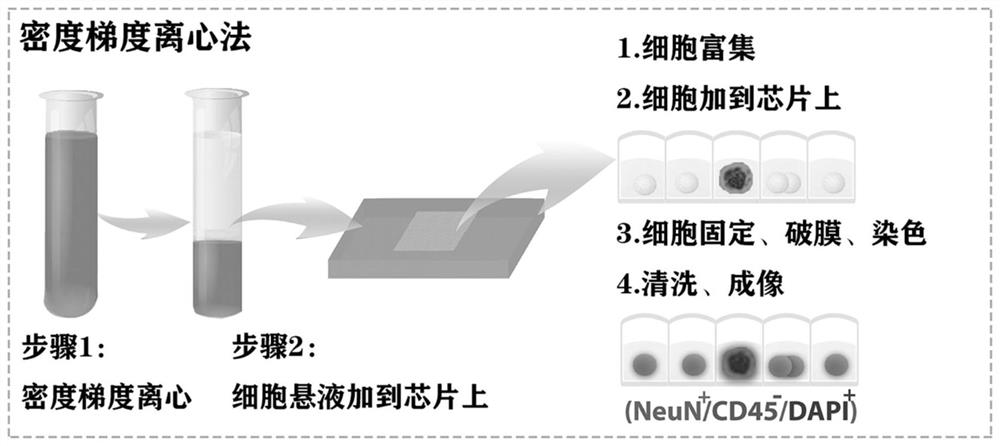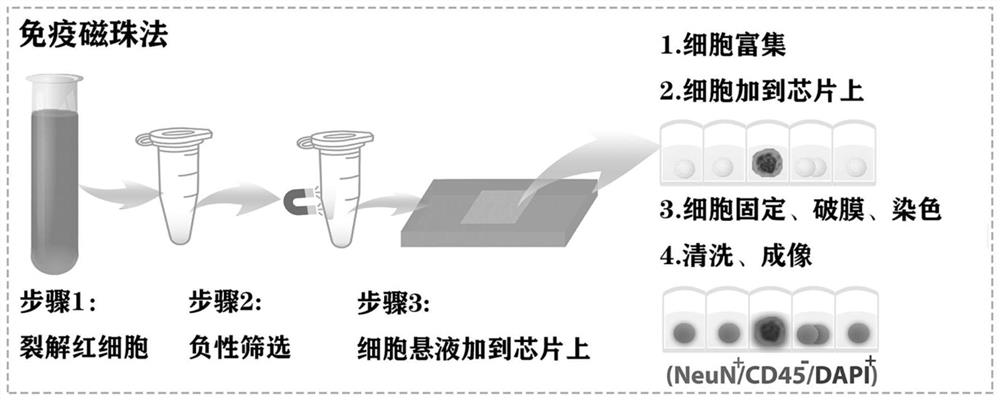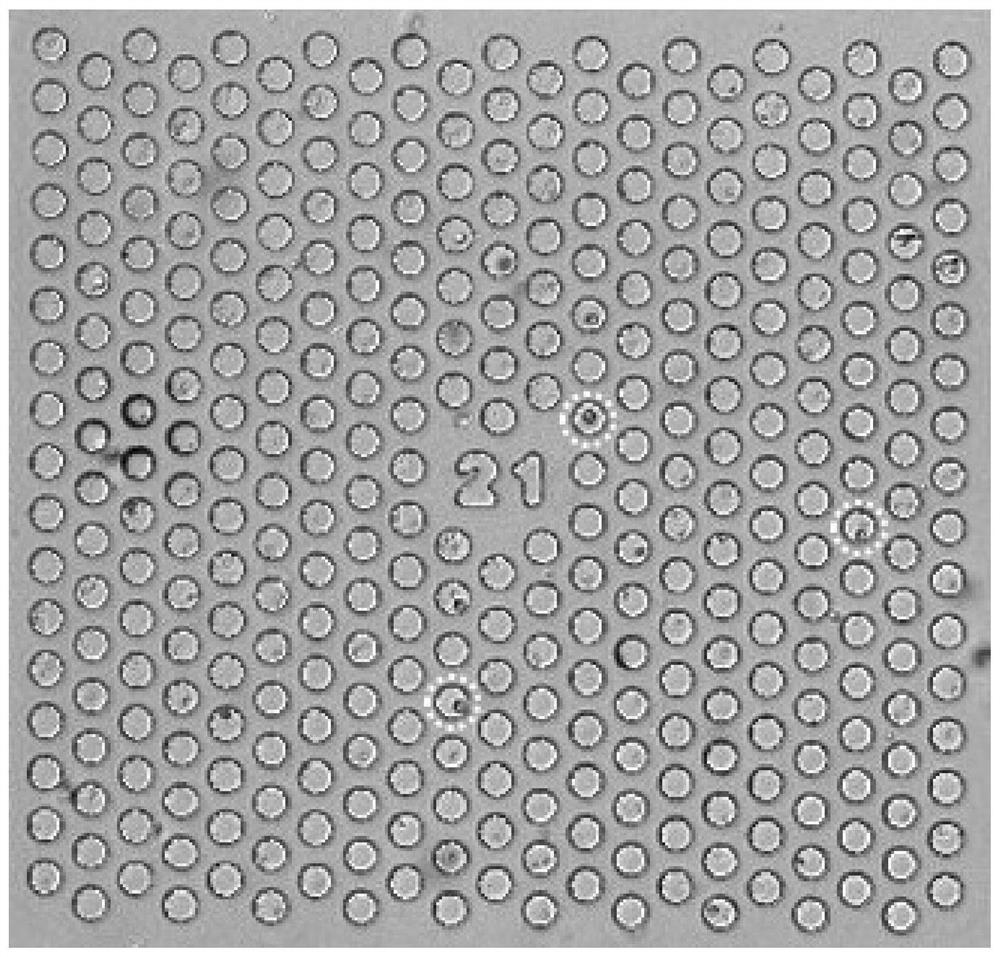Circulating nerve cell detection kit and detection method
A technology for detecting kits and nerve cells, which is applied in the field of medical biotechnology research to achieve the effects of low detection cost, simple sampling, and high specificity
- Summary
- Abstract
- Description
- Claims
- Application Information
AI Technical Summary
Problems solved by technology
Method used
Image
Examples
Embodiment 1
[0051] density gradient centrifugation
[0052] Such as figure 1 As shown, the method for separating and identifying circulating nerve cells in a blood sample mainly includes the following specific steps:
[0053] a) Density gradient centrifugation: the patient's peripheral blood sample was added to the corresponding volume of antibody for incubation and then density gradient centrifugation was performed.
[0054] b) Adding the cell suspension onto the chip: loading the cell suspension layer containing the target cells after density gradient centrifugation onto the microwell array chip.
[0055] c) Cell fixation, membrane rupture, staining: the cells on the chip are fixed, membrane rupture and then stained to identify circulating nerve cells, wherein the dye is a certain concentration of fluorescently labeled neuron-specific antibody NeuN antibody substance or NeuN The primary antibody and the secondary antibody labeled with fluorescent markers, the antibody CD45 against leu...
Embodiment 2
[0061] immunomagnetic bead method
[0062] Such as figure 2 As shown, the separation and identification method of circulating nerve cells in the peripheral blood of the central nervous system disease mainly includes the following specific steps:
[0063] 1. Lying red blood cells: using red blood cell lysate to lyse the red blood cells in the patient's peripheral blood.
[0064] 2. Negative screening: Immunomagnetic beads modified with CD45 were added to the lysed cell suspension and screened with the aid of a magnetic frame after full incubation.
[0065] 3. Add the cell suspension to the chip: After the negative screening, keep the centrifuge tube on the magnetic frame, extract the cell suspension in the centrifuge tube and load it on the microwell array chip.
[0066] 4. Cell fixation, membrane rupture, and staining: the cells on the chip are fixed, membrane ruptured, and stained to identify circulating nerve cells. The staining agent is a certain concentration of fluores...
Embodiment 3
[0069] Identification and analysis of circulating nerve cells in the peripheral blood of stroke patients is used to monitor the clinical prognosis of stroke patients.
[0070] 1. Incubate 5 ml of patient's peripheral blood (with known patient information) and 75 microliters of CTC-enriched antibody (including CD36 antibody) at room temperature for 20 minutes.
[0071] 2. Add 15 ml of Hank's balanced salt solution (HBSS) containing 2% fetal bovine serum (FBS) to the blood in step 1 and mix thoroughly.
[0072] 3. Add 15ml of density gradient centrifugation solution to the bottom of the centrifuge tube through the small hole in the middle of the centrifuge tube.
[0073] 4. Transfer the well-mixed patient's blood in step 2 to the density gradient centrifuge tube in step 3 along the tube wall. It is best not to disturb the density gradient centrifuge at the bottom of the tube.
[0074] 5. Under the premise of balance, centrifuge at 1200g for 20 minutes.
[0075] 6. After centri...
PUM
 Login to View More
Login to View More Abstract
Description
Claims
Application Information
 Login to View More
Login to View More - R&D
- Intellectual Property
- Life Sciences
- Materials
- Tech Scout
- Unparalleled Data Quality
- Higher Quality Content
- 60% Fewer Hallucinations
Browse by: Latest US Patents, China's latest patents, Technical Efficacy Thesaurus, Application Domain, Technology Topic, Popular Technical Reports.
© 2025 PatSnap. All rights reserved.Legal|Privacy policy|Modern Slavery Act Transparency Statement|Sitemap|About US| Contact US: help@patsnap.com



